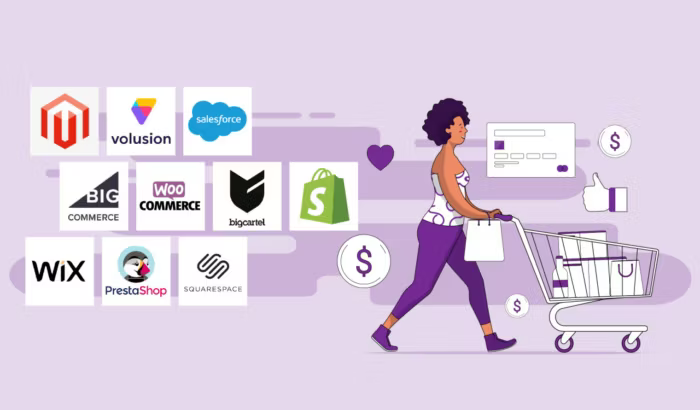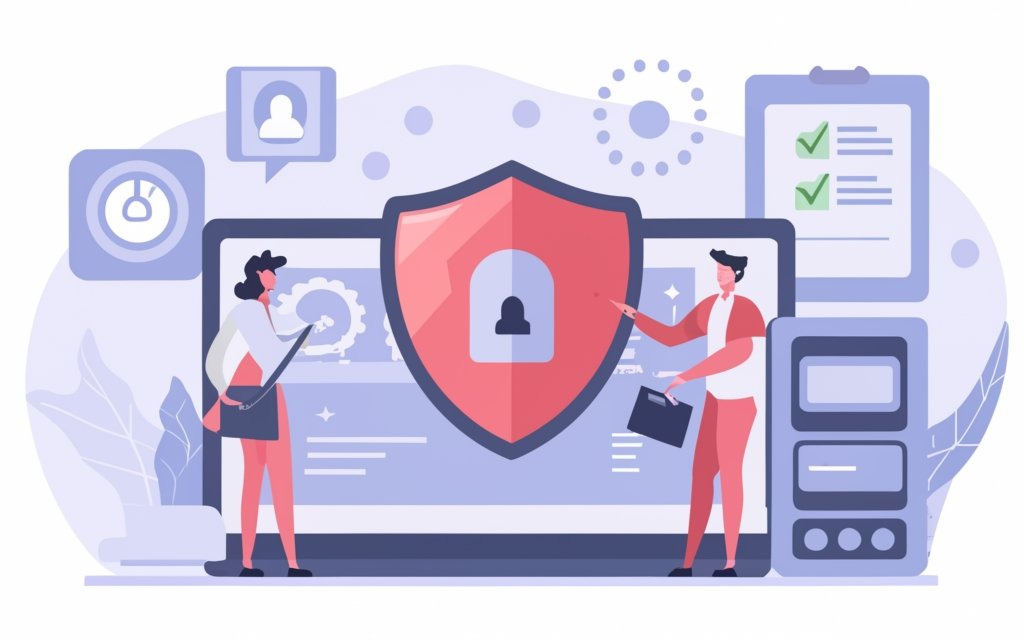Do you know what are the most important factors for building a winning ecommerce store? If you are looking to build a winning ecommerce website store in 2024, then you are at the right place.
This guide will take you through all the details of making an online store, talking about why it’s so important, the good things that come with it, how much you can do with it, and a step-by-step way to build a successful e-commerce online store.
E-commerce websites are like your business’s online shop, where people can buy and sell things. They’re a big deal because they help businesses reach more people and sell things online. Now, let’s discuss how to create a high clickable ecommerce website.
How to Build an E-Commerce Website Step-by-Step:
Building an e-commerce website is an exciting venture; taking it step by step can make the process more manageable. Let’s break down the key steps in a simple and detailed way.
Define your goals and target audience.

You have to start with your goal and audience. Start by thinking about what you want your online store to do. Are you selling things, providing services, or both? Once you have a clear idea, consider the people you want to attract to your website. Who are your customers? What do they like? What are they looking for?
Your website should be well-designed and user-friendly to make it easy for these people who use it. Think about what they want, and make sure your website gives it to them.
It’s like making a place that feels right for your friends—you want them to have a good time and find what they need.
Choosing the Right E-Commerce Platform:

Select a platform that suits your business:
- Look for an e-commerce platform that works well for what you’re selling and how you want to sell it.
- Consider your business needs and the type of products or services you offer.
Options like Shopify, WooCommerce, and Magento have different features:
- Shopify is user-friendly and great for beginners. It’s a good choice if you want something easy to set up.
- WooCommerce is a plugin for WordPress known for its flexibility. It’s handy if you already have a WordPress website.
- Magento is powerful and scalable, making it suitable for larger businesses with complex needs.
Consider features and scalability:
- Think about what features are essential for your business. Do you need a simple storefront or more advanced features like inventory management and analytics?
- Scalability is crucial. To grow, ensure the platform can handle increased traffic and products.
Design an intuitive user interface.

Designing a user-friendly website is like creating a welcoming space for online visitors. Let’s make it simple and detailed:
Looks Good:
- Choose pleasing colors and images that represent your brand.
- Use clear fonts that are easy to read.
- Arrange the content in an organized and visually appealing manner.
- Always use some icons for better user engagement.
Easy to Navigate:
- Have a simple menu at the top that lists all the important sections.
- Include search functionality so visitors can easily find what they’re looking for.
- Use clickable buttons and links that stand out.
Smooth Experience:
- Ensure that pages load quickly by optimizing images and using reliable hosting.
- Minimize the number of steps customers need to take to complete a purchase.
- Test your website on different devices to make sure it works well everywhere.
User-Friendly:
- Ensure important information, like contact details and product categories, is easy to find.
- Consider including helpful features like a chat option for customer inquiries.
- Ask friends or family to test your website and provide feedback on its ease of use.
Implement Secure Payment Gateways:

Ensuring that online transactions are safe and secure is crucial for your e-commerce website. Here’s a breakdown in simple language with bullet points:
Choose trusted payment options:
- Pick well-known and reliable payment gateways to integrate into your website.
- Customers often trust popular options like PayPal, Stripe, or Square for their security features.
Provide various payment methods:
- Offer a range of payment choices to cater to different customer preferences.
- Include credit and debit cards, digital wallets, and other secure payment options commonly used by your target audience.
Secure online transactions:
- Prioritize the safety of customer data during transactions.
- Ensure that your payment gateway complies with industry standards for data encryption, protecting sensitive information from potential threats.
SSL Certificates for Encryption:
- Implement SSL (Secure Socket Layer) certificates to encrypt data transmitted between your website and the customer’s browser.
- This encryption adds an extra layer of security, making it more difficult for unauthorized parties to access and misuse sensitive information.
Regular Security Updates:
- Keep your website’s payment system up-to-date by installing security patches and updates.
- Regularly check for any vulnerabilities and address them promptly to maintain a secure online payment environment.
User-Friendly Checkout Process:
- Design a straightforward and easy-to-understand checkout process.
- A user-friendly interface reduces the likelihood of errors during payment and enhances the overall shopping experience.
Mobile Responsiveness:

Creating a mobile-friendly website means considering mobile devices’ smaller screens and touch controls. It ensures that anyone can comfortably explore your site regardless of the device they use. By responsive for various devices, you provide a consistent and user-friendly experience, making it easier for a broader audience to engage with your online store.
Implement robust security measures.

Ensuring your e-commerce website is secure is important to protect your customers and business. Here’s how you can do it in simple terms:
Encrypt Everything:
- Encryption is like turning important information into secret code that only your website and the customer’s device can understand.
- Ensure your website uses encryption, especially for login details and payment transactions.
Keep Your Website Updated:
- Just like you update your phone or computer for better performance, your website needs updates, too.
- Regularly check for updates and apply them. These updates often include fixes for security issues, keeping your site safer.
Secure Against Cyber Threats:
- Cyber threats are like sneaky burglars trying to break into your online store. Use security tools and software to keep them out.
- Stay informed about the latest online threats and take steps to protect your website against them.
Integrate Analytics and Tracking Tools:

Use analytics tools to keep an eye on how your website is performing.
Track user behavior and sales metrics to gather insights to help you make informed decisions and improve your online store.
Many analytics tools are available in the Google search engine, like Google Search Console, Google Analytics, Semrush, Clickly, and many more. Choose any tool according to your website’s needs and implement it on your website to track the behavior of your target audience.
Track user behavior:
- Keep an eye on how people behave on your website.
- Learn what pages they visit, how long they stay, and what products or services they show interest in.
Monitor sales metrics.
- Keep track of your sales numbers and patterns.
- Understand which products are popular and when your sales peak or dip.
Gather Insights:
- Use the data you collect to gain insights into your business.
- Understand what’s working well and what areas might need improvement.
Continuous Improvement:
- Use the gathered insights to make ongoing improvements.
- A well-informed approach ensures that your online store evolves and stays competitive.
Search Engine Optimization (SEO):

Boost visibility with SEO strategies:
To make sure more people find your website when they search online, use search engine optimization (SEO) strategies. SEO is like a set of tricks that help your site reach organic traffic from search engines.
Research and Use Keywords:
Consider the words or phrases customers might type into a search engine when looking for products like yours. These are called keywords. Do some research to find the best keywords for your business. Then, use these keywords naturally in your website’s content, like in product descriptions or blog posts. This makes it more likely for your site to pop up when someone searches for things you offer.
Conclusion:
In conclusion, building a successful ecommerce website in 2024 requires careful planning, attention to detail, and the implementation of key strategies. By defining your goals, selecting the right platform, designing a user-friendly interface, prioritizing security, and utilizing analytics tools, you can create a winning online store that attracts customers and drives sales.
At Arham Web Works, we understand the importance of a well-designed and functional website in today’s digital landscape. Our web development services are tailored to meet your specific needs, whether you’re starting from scratch or looking to enhance your existing online presence. With our experts and dedicated team, we can help bring your ecommerce vision to life and achieve success in the competitive online business. Let us be your partner in building a highly winning ecommerce website store online in 2024 and beyond.



